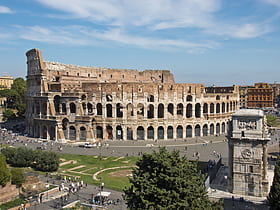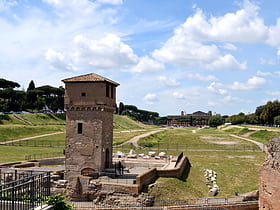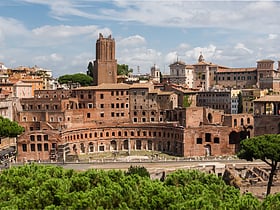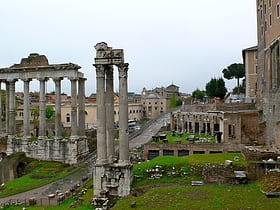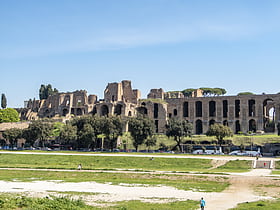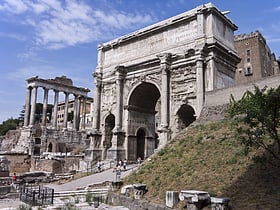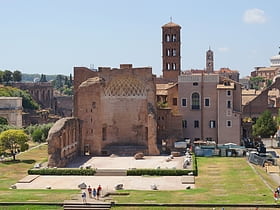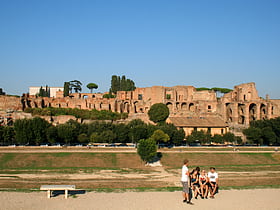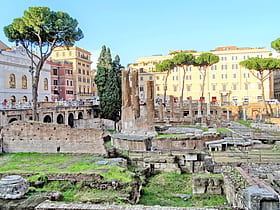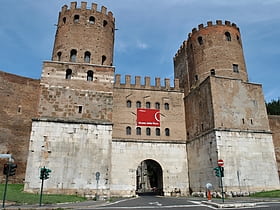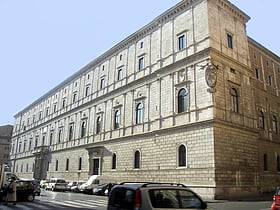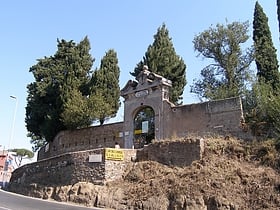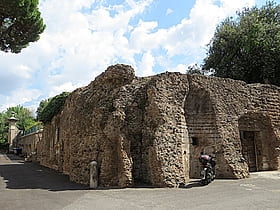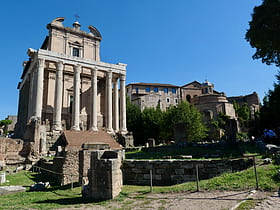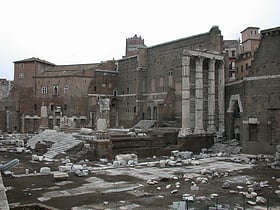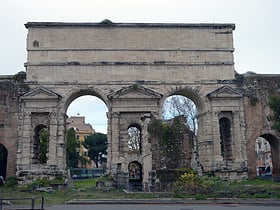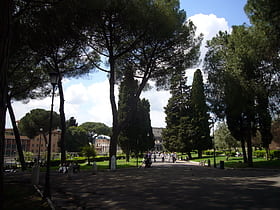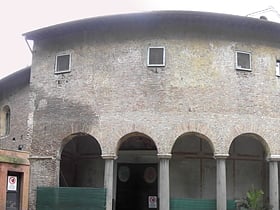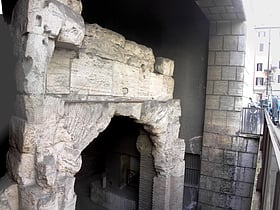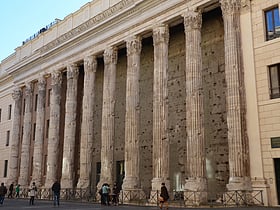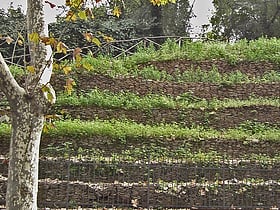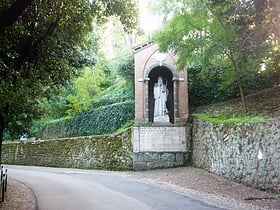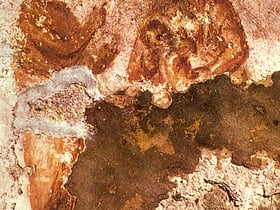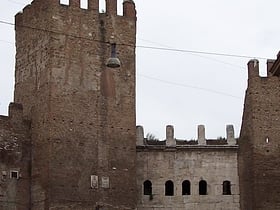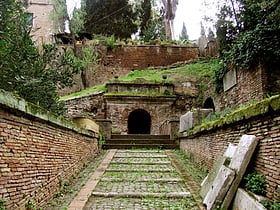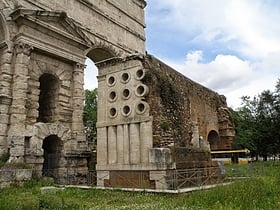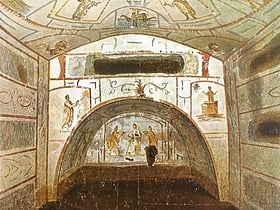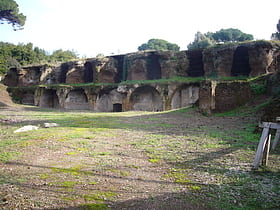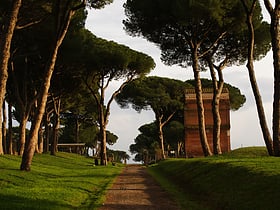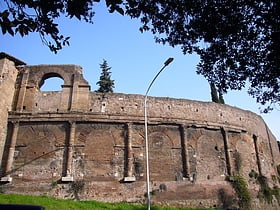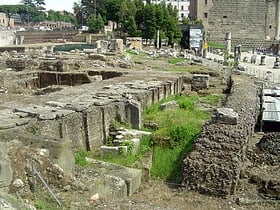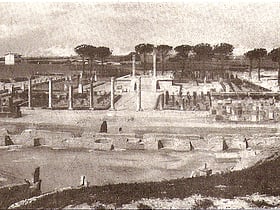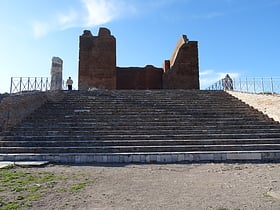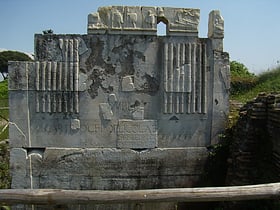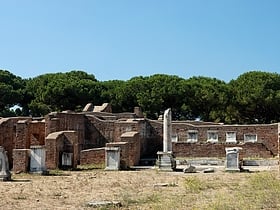Rome: Ruins
Places and attractions in the Ruins category
Categories
- Church
- Baroque architecture
- Historical place
- Museum
- Palace
- Sacred and religious sites
- Vernacular architecture
- Architecture
- Street
- Art museum
- Ancient Roman architecture
- Ruins
- Fountain
- Park
- Monuments and statues
- History museum
- Square
- Bridge
- Temple
- Renaissance architecture
- Neighbourhood
- City gate
- Romanesque architecture
- Specialty museum
- Arch
- Theater
- Cemetery
- Catacombs
- Archaeological site
- Historic walking areas
- Concerts and shows
- Sport
- Sport venue
- Giacomo della Porta
- Hill
- Gianlorenzo Bernini
- Art gallery
- Tomb
- Francesco Borromini
- Shopping
- Natural attraction
- Archaeological museum
- Martino Longhi il Vecchio
- Unesco
- Carlo Maderno
- Library
- Carlo Rainaldi
- Spiritual
- Opera
- Arenas and stadiums
- Aqueduct
- Nature
- Modern art museum
- Mausoleum
- Obelisk
- Giovanni Battista Soria
- Giovanni Antonio De Rossi
- Tower
- Forts and castles
- Music venue
- Garden
- Golf
- Hotel
- Gothic Revival architecture
- Nightlife
- Baths
- Amusement park
- Memorial
- Shopping centre
Colosseum
Iconic ancient Roman gladiatorial arena The Colosseum, an enduring icon of Imperial Rome, stands as one of the most remarkable architectural feats in the world. This colossal amphitheatre, nestled in the heart of Rome, Italy, has withstood the ravages of time to tell tales of gladiatorial combat, public...
Circus Maximus
Stone arena for vast Roman assemblies The Circus Maximus is a vast, ancient chariot racing stadium and mass entertainment venue nestled in the heart of Rome, Italy. Once the first and largest stadium in ancient Rome and the Roman Empire, it could accommodate over 150,000 spectators.
Trajan's Market
Restored Roman city forum complex Trajan's Market, nestled in the heart of Rome, Italy, is a remarkable testament to ancient Roman engineering and commercial life. This sprawling complex, often considered the world's oldest shopping mall, was constructed between 100 and 110 AD during the reign of...
Temple of Vespasian and Titus
Nestled among the ruins of the Roman Forum stands the Temple of Vespasian and Titus, a monument steeped in ancient history and architectural wonder. This Roman temple was constructed in the 1st century AD to honor the Flavian dynasty's emperors, Vespasian, and his son...
Palatine Hill
Historic area with Roman ruins Perched high above the Roman Forum, the Palatine Hill is not only one of the most ancient parts of the city but also a museum that breathes life into Rome's millennia-old history. According to Roman mythology, it was on this very hill that Romulus founded the city...
Arch of Septimius Severus
Triumphal archway dating from 203 AD Standing proudly in the heart of Rome, the Arch of Septimius Severus is a monumental triumphal arch that has withstood the test of time. Erected in 203 AD, this ancient structure commemorates the Roman victories of Emperor Septimius Severus and his two sons against the...
Temple of Venus and Roma
The Temple of Venus and Roma, situated in the heart of Rome, Italy, is an ancient edifice that once stood as the largest temple in the Eternal City. Dedicated to the goddesses Venus Felix, the bringer of good fortune, and Roma Aeterna, the personification of the city...
House of Augustus
The House of Augustus, a notable historical landmark nestled on the eminent Palatine Hill in the heart of Rome, Italy, is a splendid window into the opulent lifestyle of the city's first emperor, Augustus. This ancient residence, which served as the personal quarters...
Largo di Torre Argentina
Roman ruins and home to a cat colony Largo di Torre Argentina is a historic square tucked away in the heart of Rome, Italy, offering a unique glimpse into the ancient past of the Eternal City. This archaeological treasure trove is famed for its remnants of four Republican Roman temples and the remains of...
Porta San Sebastiano
Porta San Sebastiano is one of the grandest and most well-preserved gates of the Aurelian Walls in Rome, Italy. This historical landmark, also known as the Appian Gate, marks the beginning of the ancient Appian Way – the queen of the long roads.
Palazzo della Cancelleria
The Palazzo della Cancelleria is a Renaissance palace in Rome, Italy, situated between the present Corso Vittorio Emanuele II and the Campo de' Fiori, in the rione of Parione.
San Bonaventura al Palatino
The Church of San Bonaventura al Palatino is a small 17th century church building in Rome built on Via Marco Colidio the Palatine Hill.
Catacombe di San Callisto
Ancient Roman burial tunnels and crypts The Catacomb of Callixtus is one of the Catacombs of Rome on the Appian Way, most notable for containing the Crypt of the Popes, which once contained the tombs of several popes from the 2nd to 4th centuries.
Catacombe di San Sebastiano
The Catacombs of San Sebastiano are a hypogeum cemetery in Rome, rising along Via Appia Antica, in the Ardeatino Quarter. They are one of the very few Christian burial places that have always been accessible.
Temple of Antoninus and Faustina
The Temple of Antoninus and Faustina is an ancient Roman temple in Rome, which was later converted into a Roman Catholic church, the Chiesa di San Lorenzo in Miranda or simply "San Lorenzo in Miranda".
Forum of Augustus
The Forum of Augustus is one of the Imperial fora of Rome, Italy, built by Augustus. It includes the Temple of Mars Ultor. The incomplete forum and its temple were inaugurated in 2 BC, 40 years after they were first vowed.
Porta Maggiore
The Porta Maggiore, or Porta Prenestina, is one of the eastern gates in the ancient but well-preserved 3rd-century Aurelian Walls of Rome. Through the gate ran two ancient roads: the Via Praenestina and the Via Labicana. The Via Prenestina was the eastern road to the ancient town of Praeneste.
Parco del Colle Oppio
The Oppian Hill is the southern spur of the Esquiline Hill, one of the Seven Hills of Rome, Italy. It is separated from the Cispius on the north by the valley of the Suburra, and from the Caelian Hill on the south by the valley of the Colosseum.
Santo Stefano Rotondo
The Basilica of St. Stephen in the Round on the Celian Hill is an ancient basilica and titular church in Rome, Italy.
Stadio di Domiziano
The Stadium of Domitian, also known as the Circus Agonalis, was located to the north of the Campus Martius in Rome, Italy. The Stadium was commissioned around AD 80 by the Emperor Titus Flavius Domitianus as a gift to the people of Rome, and was used mostly for athletic contests.
Temple of Hadrian
The Temple of Hadrian was dedicated to the deified emperor Hadrian on the Campus Martius in Rome, Italy by his adoptive son and successor Antoninus Pius in 145 C.E.
Monte Testaccio
Monte Testaccio is an artificial mound in Rome composed almost entirely of testae, fragments of broken ancient Roman pottery, nearly all discarded amphorae dating from the time of the Roman Empire, some of which were labelled with tituli picti.
Tre Fontane Abbey
Tre Fontane Abbey, or the Abbey of Saints Vincent and Anastasius, is a Roman Catholic abbey in Rome, held by monks of the Cistercian Order of the Strict Observance, better known as Trappists.
Catacombe di Priscilla
The Catacomb of Priscilla is an archaeological site on the Via Salaria in Rome, Italy, situated in what was a quarry in Roman times. This quarry was used for Christian burials from the late 2nd century through the 4th century.
Porta Tiburtina
Porta Tiburtina or Porta San Lorenzo is a gate in the Aurelian Walls of Rome, Italy, through which the Via Tiburtina exits the city.
Tomb of the Scipios
The Tomb of the Scipios, also called the hypogaeum Scipionum, was the common tomb of the patrician Scipio family during the Roman Republic for interments between the early 3rd century BC and the early 1st century AD.
Tomb of Eurysaces the Baker
The tomb of Marcus Vergilius Eurysaces the baker is one of the largest and best-preserved freedman funerary monuments in Rome. Its sculpted frieze is a classic example of the "plebeian style" in Roman sculpture.
Catacombs of Marcellinus and Peter
The Catacombs of Marcellinus and Peter are found approximately three kilometers from southeast Rome and the ancient Via Labicana, and date to the 4th century AD.
The Seven Halls
The Seven Halls, or Sette Sale, is the name of the complex of cisterns located on the Oppian Hill, Rome.
Tombs of Via Latina
The Tombs of the Via Latina are Roman tombs, mainly from the 2nd century AD, that are found along a short stretch of the Via Latina, an ancient Roman road close to Rome, Italy. They are now part of an archaeological park and can be visited.
Amphitheatrum Castrense
The Amphitheatrum Castrense is a Roman amphitheatre in Rome, next to the church of Santa Croce in Gerusalemme. Both the Amphiteatrum and the Circus Varianus were part of the palatial villa known as the Sessorium.
Forum of Nerva
Forum of Nerva is an ancient structure in Rome, Italy, chronologically the next to the last of the Imperial fora built.
Piazzale delle Corporazioni
The Forum of Corporations, or the Piazzale delle Corporazioni, was the principal center of commerce and trade for the Roman Empire mainly during the Age of Augustus.
Capitolium
The Capitolium is a Roman temple located in the archaeological area of Ostia, Rome. The building is clearly visible, as it stands above all other ruins, and is positioned at the area formerly occupied by the forum, at the intersection of the cardo...
Barracks of the Vigiles
The fire station is a building in the Roman city of Ostia used as the headquarters of a detachment of firefighters who were in charge of extinguishing fires.
Map

